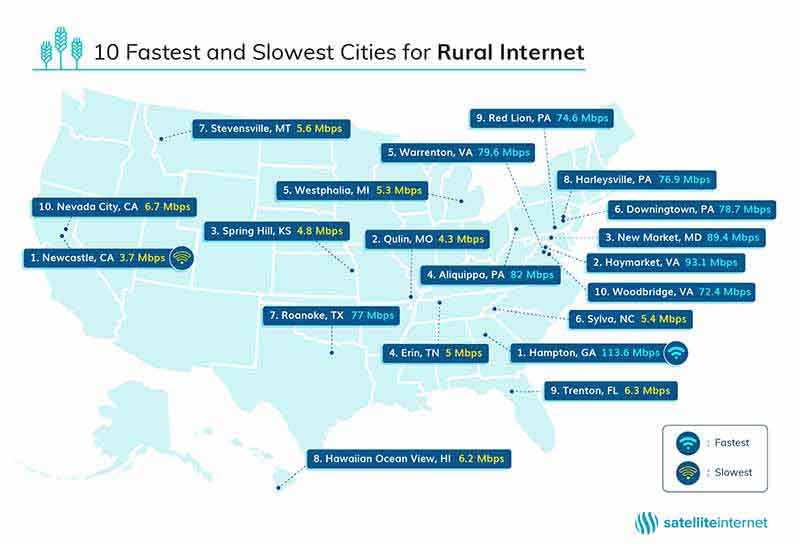About 97% of the US is classified as “rural” by the US Census Bureau. But according to the FCC’s 2019 Broadband Deployment Report, more than one in four rural Americans don’t have access to internet speeds of at least 25 Mbps (the minimum requirement for broadband internet). That’s 21.3 million people.
Some rural Americans have it better than others. About 29% can reach internet speeds up to 250 Mbps. But 12% of the same demographic can’t even get 10 Mbps internet speeds.
